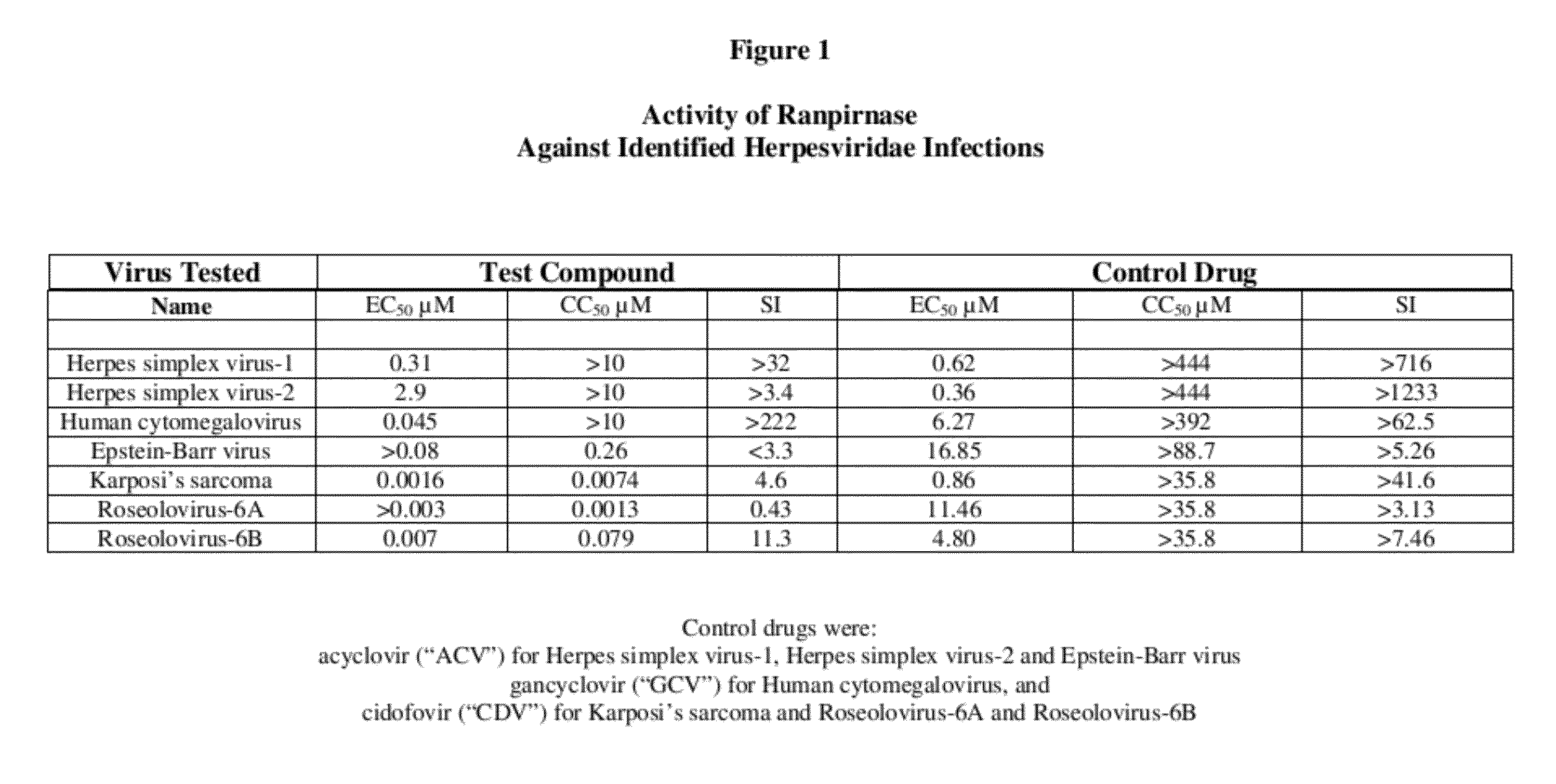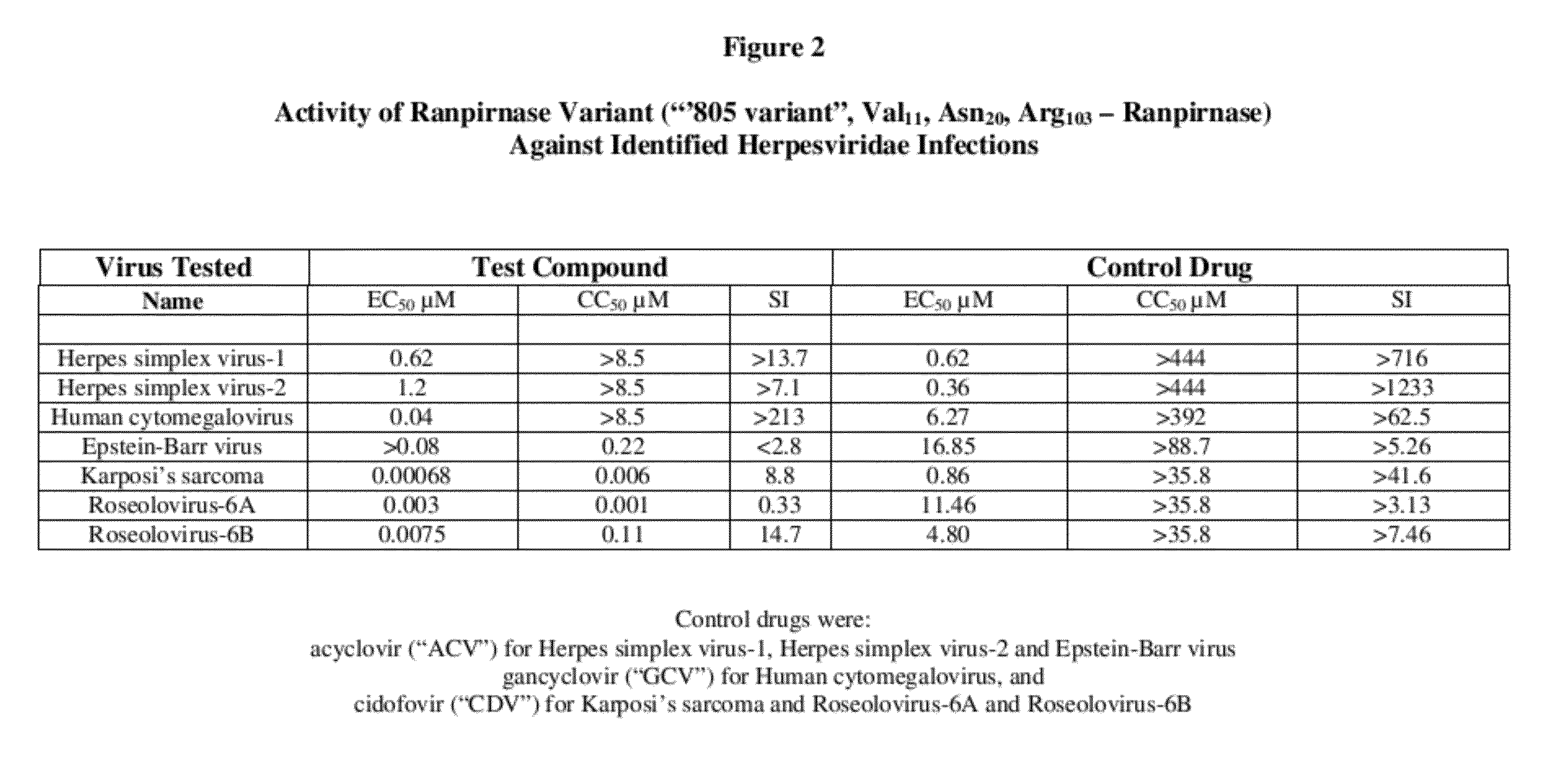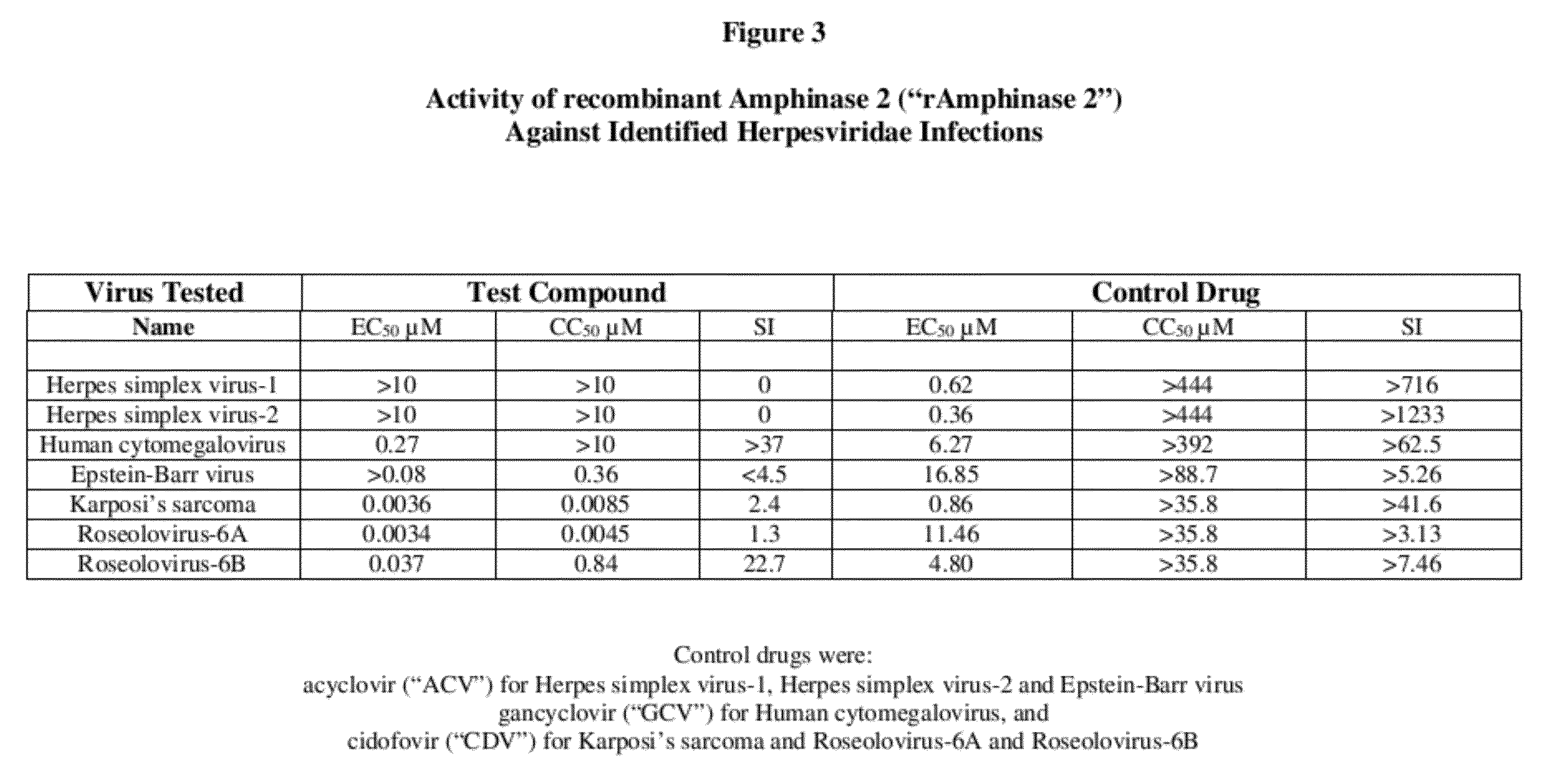Methods of treating infections originating from viruses in the herpesviridae family
a technology of herpesvirus and herpes virus, which is applied in the direction of antivirals, pharmaceutical active ingredients, peptide/protein ingredients, etc., can solve the problems of toxic and poorly tolerated, insufficient active activity of both drugs, and insatiable treatmen
- Summary
- Abstract
- Description
- Claims
- Application Information
AI Technical Summary
Problems solved by technology
Method used
Image
Examples
Embodiment Construction
[0013]To evaluate the activity of the three tested RNases against human herpesviridae infections, the following quantitative PCR assay was used:
[0014]Solutions of the tested RNases were prepared in cell culture medium without use of dimethyl sulfoxide (“DMSO”). DMSO is unnecessary because the tested RNases are water-soluble.
I. Evaluation Against Herpes Simplex Virus-1, Herpes Simplex Virus-2, and Human Cytomegalovirus
[0015]Antiviral activity against herpes simplex virus-1, herpes simplex virus-2, and human cytomegalovirus was evaluated by cytopathic effect inhibition (“CPE-inhibition”) assays in primary human foreskin fibroblast (HFF) cells. Primary HFF cells were counted and 2.5×104 cells per well were seeded into 96-well plates in 100 it of minimal essential medium supplemented with 10% fetal bovine serum (“FBS”). The cells were then incubated for 24 hours at 37° C. in a 5% CO2 humidified incubator. Solutions of the tested RNases were added to triplicate wells to yield a final con...
PUM
 Login to View More
Login to View More Abstract
Description
Claims
Application Information
 Login to View More
Login to View More - R&D
- Intellectual Property
- Life Sciences
- Materials
- Tech Scout
- Unparalleled Data Quality
- Higher Quality Content
- 60% Fewer Hallucinations
Browse by: Latest US Patents, China's latest patents, Technical Efficacy Thesaurus, Application Domain, Technology Topic, Popular Technical Reports.
© 2025 PatSnap. All rights reserved.Legal|Privacy policy|Modern Slavery Act Transparency Statement|Sitemap|About US| Contact US: help@patsnap.com



